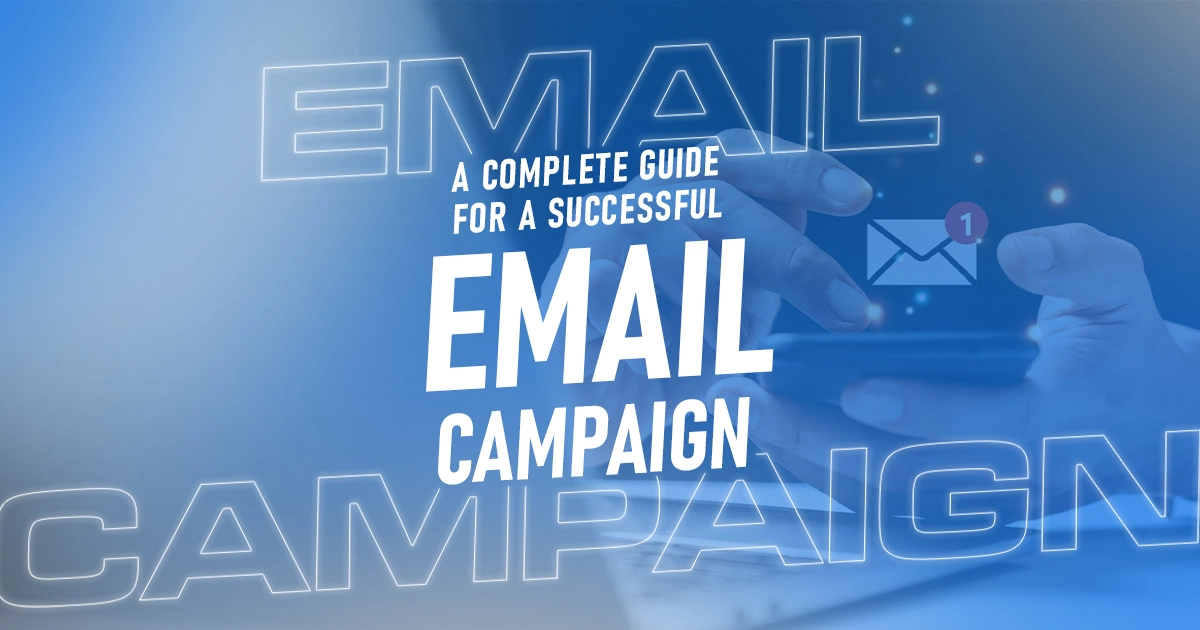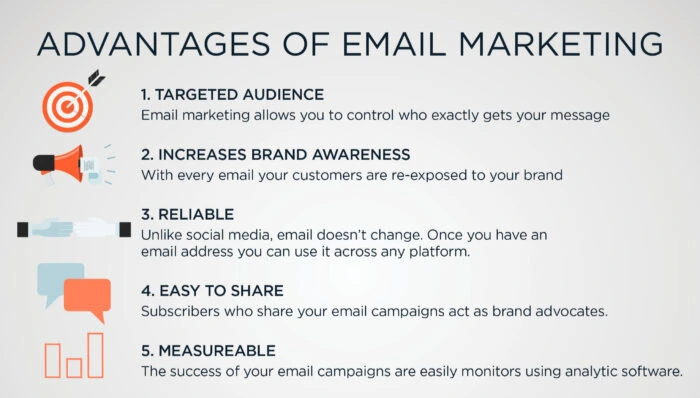Email marketing is one of the efficient ways of digital marketing. It involves utilising emails to promote the products and services to existing or new potential customers. The goal of sending compelling emails or newsletters elaborating on your promotional concerns is to let customers know about your new product collection, services, sales or discount offers.
Do you know how many email accounts exist right now? Statista Research conducted in 2022 shows 4.3 billion email users are there, which is expected to jump to 4.6 billion in 2025, i.e., more than half of the expected world population. Reaching this large population by traditional marketing ways would have taken years, but that can be done in a day now.
What a great opportunity to take advantage of the massive users for our marketing purposes! It’s the rapidly conducted, cost-effective and result-giving method for generating leads.
How to conduct a successful email marketing campaign?
Email marketing is not a new term. It has been used with outstanding response since 1978. However, its pattern of conduction is continuously varying with evolving market trends. Email marketing campaigns may consist of a single email promoting your product or service, a series of newsletters, or contacting the customers for their feedback about your products or services. To accomplish your marketing and sales goal through email marketing, following measures should be cautiously taken.
1.) Understanding the basics of Email Marketing:
Having in-depth knowledge about the basics of email marketing can pave the way for success. It gives the power of direct communication to connect with audiences in an impactful manner. Knowing how to build a subscriber list, create compelling content, and deliver it to the right audience at the right time makes your email campaign meet the desired outcomes. This fundamental approach focuses on establishing relationships with subscribers, offering value through informative content, exclusive offers, or customised messages.
2.) Building a Quality Email List
Building a quality email list helps in generating a successful email marketing strategy, focusing on the importance of an engaged and responsive audience. It involves the effective tactics to organically grow a subscriber base filled with individuals genuinely interested in your brand or content.
Its methods include creating compelling sign-up forms on websites, offering valuable incentives such as exclusive content or discounts. Quality outweighs quantity in an email list; having a smaller but highly engaged audience yields better results. Maintaining the productive list by regularly cleaning out inactive subscribers is equally essential.
3.) Creating a Compelling Content
Compelling content for email marketing involves a balance of creativity, value, and relevance. It’s about capturing attention from the subject line and maintaining engagement throughout the email. Whether it’s a captivating story, exclusive offers, educational resources, or visually appealing graphics, the content should resonate with the audience’s needs, desires, or pain points, offering solutions, insights, or entertainment.
The email content must contain effective CTAs to increase the reader’s engagement. Consistency in delivering high-quality, personalised content strengthens brand trust and loyalty, encouraging recipients to engage eagerly with each email.
4.) Segmentation and Personalisation
Segmentation involves splitting your audience into groups based on demographics, interests, behaviours, or preferences. This allows for targeted messaging, ensuring each segment receives content that is attuned to their specific interests and needs. Personalisation takes this further by infusing emails with individualised elements, such as using the recipient’s name, referencing past interactions, or suggesting products based on browsing history.
These two are the dynamic duo powering effective email marketing strategies, driving higher engagement, click-through rates, and conversions. By combining them, email marketers create hyper-targeted campaigns that make the recipients feel special, uplifting their interest in your brand.
5.) Campaign Automation
Email marketing automation revolutionises how brands engage with their audience by streamlining and optimising communication workflows. It involves setting up predefined actions that automatically send emails based on specific subscriber behaviours, time triggers, or segmented groups. Automation allows for personalised, timely, and relevant messaging without constant manual intervention.
Whether it’s welcome sequences for new subscribers, triggered follow-ups after purchase, or re-engagement campaigns for inactive users, automation ensures that the right message reaches the right person at the right time. This not only saves time and effort but also generates leads, strengthens relationships, and boosts conversions.
6.) Optimisation for Mobile
Optimising emails for mobile devices is no longer an option but a necessity in today’s digital era. With many emails opening on mobile devices, ensuring emails render seamlessly across various screen sizes is inevitable. This optimisation involves employing responsive design elements, such as scalable layouts, legible fonts, and appropriately sized images, to guarantee a user-friendly smartphone experience.
Creating concise yet impactful content and strategically placing call-to-action buttons for easy tapping further enhances mobile usability. Mobile optimisation isn’t just about aesthetics; it directly impacts engagement and conversion rates.
7.) Clear Call-to-Actions (CTAs)
Clear and effective call-to-actions (CTAs) guide successful email marketing campaigns, directing recipients towards the desired action. These concise and actionable phrases prompt subscribers to take specific steps, whether purchasing a product, signing up for a webinar, downloading content, or visiting a website. Effective CTAs stand out visually, using contrasting colours, simple yet compelling language, and strategic placement within the email to draw attention and drive engagement.
CTAs should be straightforward, telling recipients exactly what action to take. By optimising CTAs to be persuasive and easily identifiable, marketers can significantly increase click-through rates and conversions, ensuring that the email’s purpose is fulfilled.
8.) Analytics and Metrics
Analytics and metrics play a significant role in email marketing campaigns’ continual evolution and success. They offer valuable insights into the performance of each campaign, providing a detailed understanding of subscriber behaviour, engagement levels, and the effectiveness of content.
Key metrics like email opening rates, click-through rates, conversion rates, and bounce rates illuminate the impact of emails, allowing marketers to access the campaign’s reach and resonance with the audience. Considering these insights, email marketers can make further decisions, adapt strategies, and alter the content to maximise engagement, conversions, and overall ROI.
9.) Compliance and ethical practices
Adhering to regulations such as the CAN-SPAM Act and GDPR ensures that email campaigns are conducted transparently, respecting subscriber privacy and preferences. It includes obtaining explicit consent for email communication, providing clear opt-out options, and securing sensitive subscriber data.
Beyond legal obligations, ethical practices involve respecting user preferences, refraining from spammy tactics, and delivering valuable, relevant content to subscribers. Upholding ethical standards builds trust and credibility, developing long-term relationships with the audience.
10.) Integration with other digital channels
Linking other digital channels with your email amplifies the impact of email marketing by creating a cohesive brand experience. Combining email marketing with social media, content marketing, or paid advertising creates a synchronised ecosystem that fortifies messaging and engages audiences more effectively. For instance, integrating email with social media allows for cross-promotion, utilising the strengths of each platform to expand reach and drive engagement.
In the rapidly evolving world of digital marketing, mastering the art of email marketing is an efficient strategy for developing meaningful connections and generating desired outcomes. The above complete guide must have helped you run successful email campaigns.
Each element contributes to the propelling approach necessary for email marketing success, from understanding the fundamental principles to implementing advanced strategies. As the digital sphere continues to evolve, this guide serves as a direction, empowering you to navigate the technicalities of email marketing.








